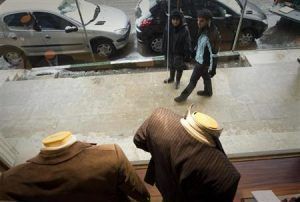The recent crisis in the foreign currency market, which has boosted the value of the U.S. dollar against the rial, has reduced the purchasing power of the Iranian consumer by 80 percent in the past eight months, according to Vahid Shaqaqi, an economist and faculty member at Kharazmi University in Tehran.
“Even if the country doesn’t experience another major economic crisis, it will still take 10 years for the purchasing power of the Iranian consumer to reach 2011 levels,” Mr. Shaqaqi said. “The foreign exchange market has a huge impact on a country’s economy. For instance, a manufactured crisis in the foreign exchange market can destroy a country more effectively than military action.”

Shaqaqi explained: “The Iranian economy operated in a volatile foreign exchange market in 2011. The rial dropped in value from 1,100 rials to a dollar to 3,700 rials, causing inflation to reach 35 percent. Consumer spending dropped significantly. The country showed negative economic growth of 6.8 percent. The situation has deteriorated further since then.”
“One of the main problems is the lack of foreign investment in Iran,” Shaqaqi noted. “More the 50 percent of Iranian imports and exports are traded with only four countries, which makes our economy very vulnerable.”
“The export of petrochemical products is a big part of our economy. Unfortunately, exporters have kept their money in foreign banks,” he said. “Iran faced similar challenges in the foreign exchange market in 2017 and 18. The rial has fallen from 3,500 rials to a dollar to 6,800 rials in the past couple of months.”
[Translated from Persian by Fardine Hamidi]


